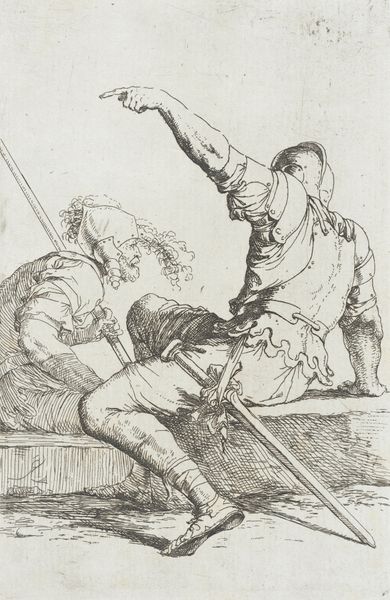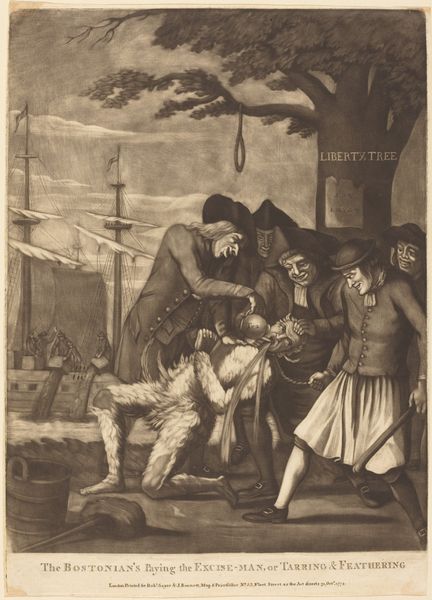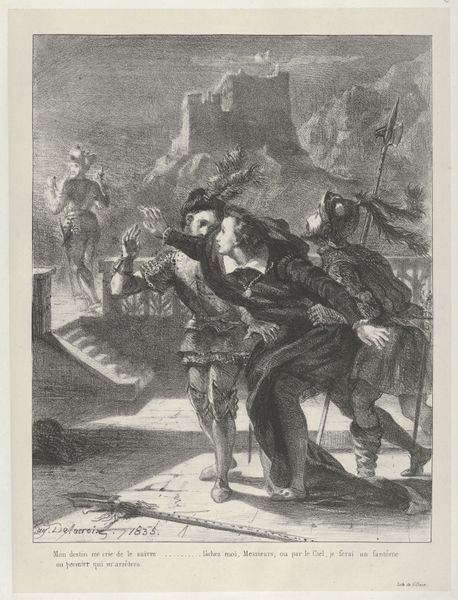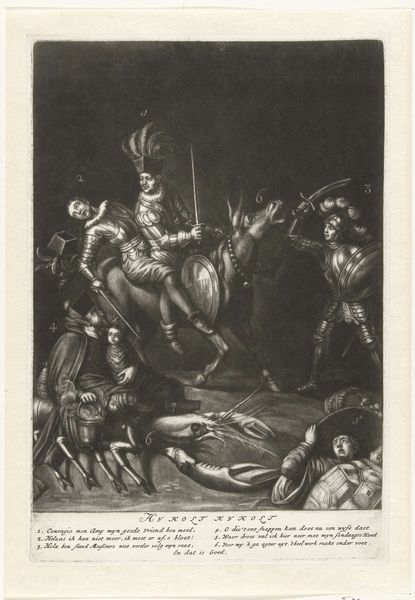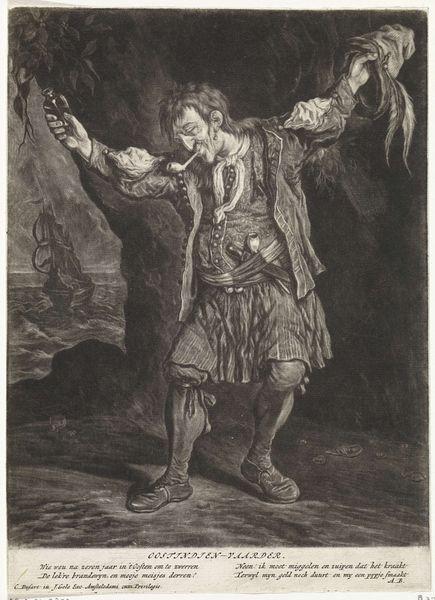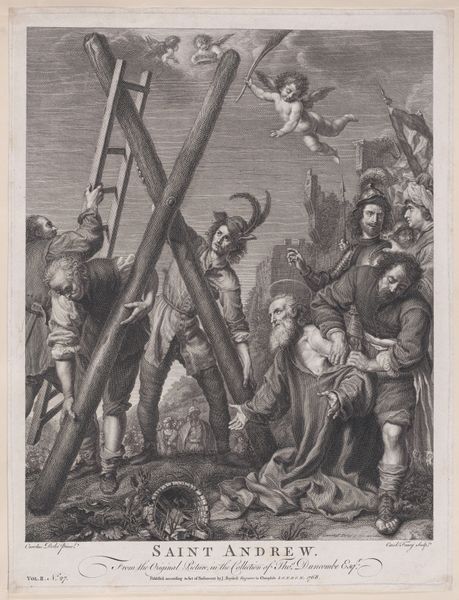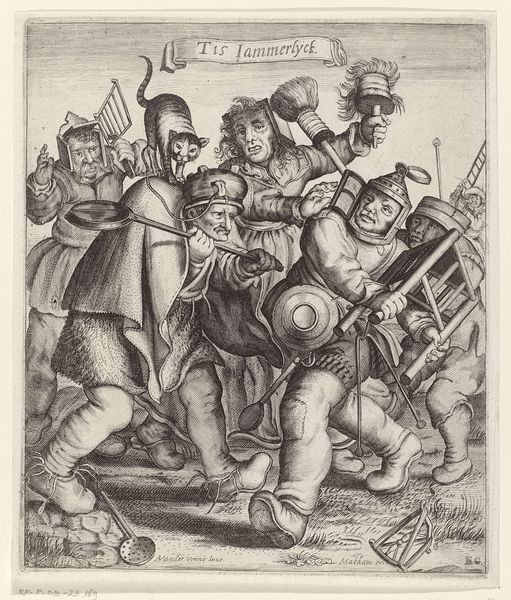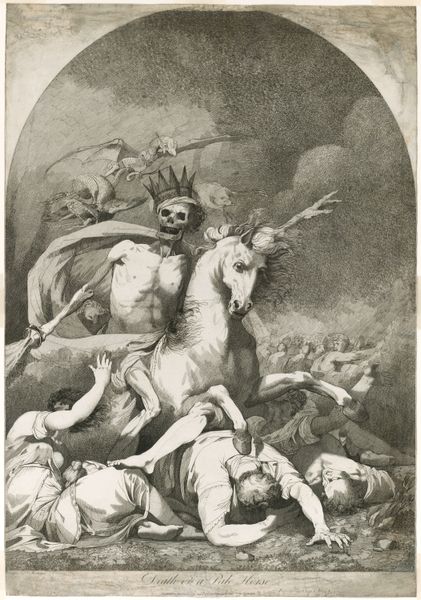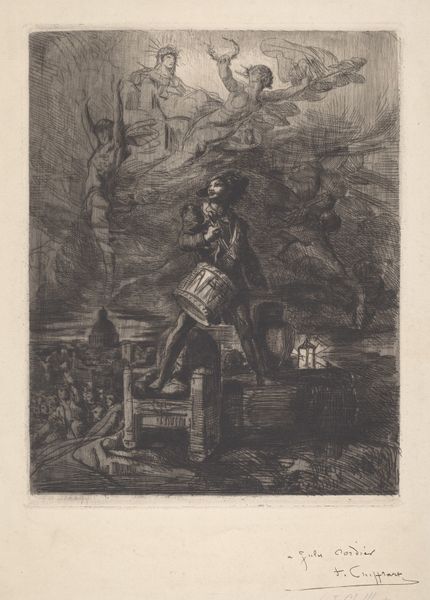
Dimensions: 61 cm (height) x 37 cm (width) (Netto), 69.6 cm (height) x 47.1 cm (width) (Brutto)
Curator: Let's discuss Nicolai Abildgaard's 1782 history painting, "Christian IV Aboard his Flagship 'The Trinity'," currently residing at the SMK. It's an oil on canvas depicting a pivotal moment in Danish history. Editor: My immediate reaction is of controlled chaos. There's a distinct visual hierarchy, but the darkness and swirling composition hint at something turbulent. Curator: The historical context is essential. Christian IV, despite sustaining severe injuries during the Battle of Colberger Heide, remained a figurehead. This painting portrays his resolve amidst chaos, a visual assertion of power in the face of adversity. It speaks to his authority as both King and Naval leader, reflecting a specific identity constructed during that period. Editor: Formally, the diagonal lines created by the mast and fallen figures generate dynamic tension. The restricted palette, mainly earth tones punctuated by the King's red suit, focuses our attention. There's a stark contrast between the diffused lighting on the figures in the background and the directed light on Christian IV. Curator: The portrayal of Christian IV connects directly with his political maneuvering. His wiping his face could symbolize weeping or injury, or a purposeful action designed to show determination to the remaining soldiers around him. How does this act reflect the broader dynamics of 18th-century representations of powerful rulers? Editor: The gesture certainly adds complexity. Structurally, his body forms a strong vertical line against the diagonals, establishing him as the central, stable element in a sea of instability. His gaze and pose draw the viewer in while separating him, reinforcing his authority through composition and technique. The red garb has a vital narrative function in asserting dominance and power in spite of an event characterized by war and instability. Curator: Yes, that division highlights both the privilege afforded to the King and the cost he faced leading in war. His figure also dominates, while others fade into shadow or lie on the ground as a counterpoint that shows how even kings bear responsibility. Editor: So, looking at the construction of pictorial space through light, line and palette emphasizes hierarchical narratives about resilience and strength. Thank you, the layering of its historical and social themes with a clear organization through painting, it presents something really compelling. Curator: I appreciate the breakdown of the aesthetic choices as being both very telling for their own artistic goals and larger symbolic resonance of resilience and social inequality. A deeper engagement, certainly, that I shall consider moving forward.
Comments
No comments
Be the first to comment and join the conversation on the ultimate creative platform.
